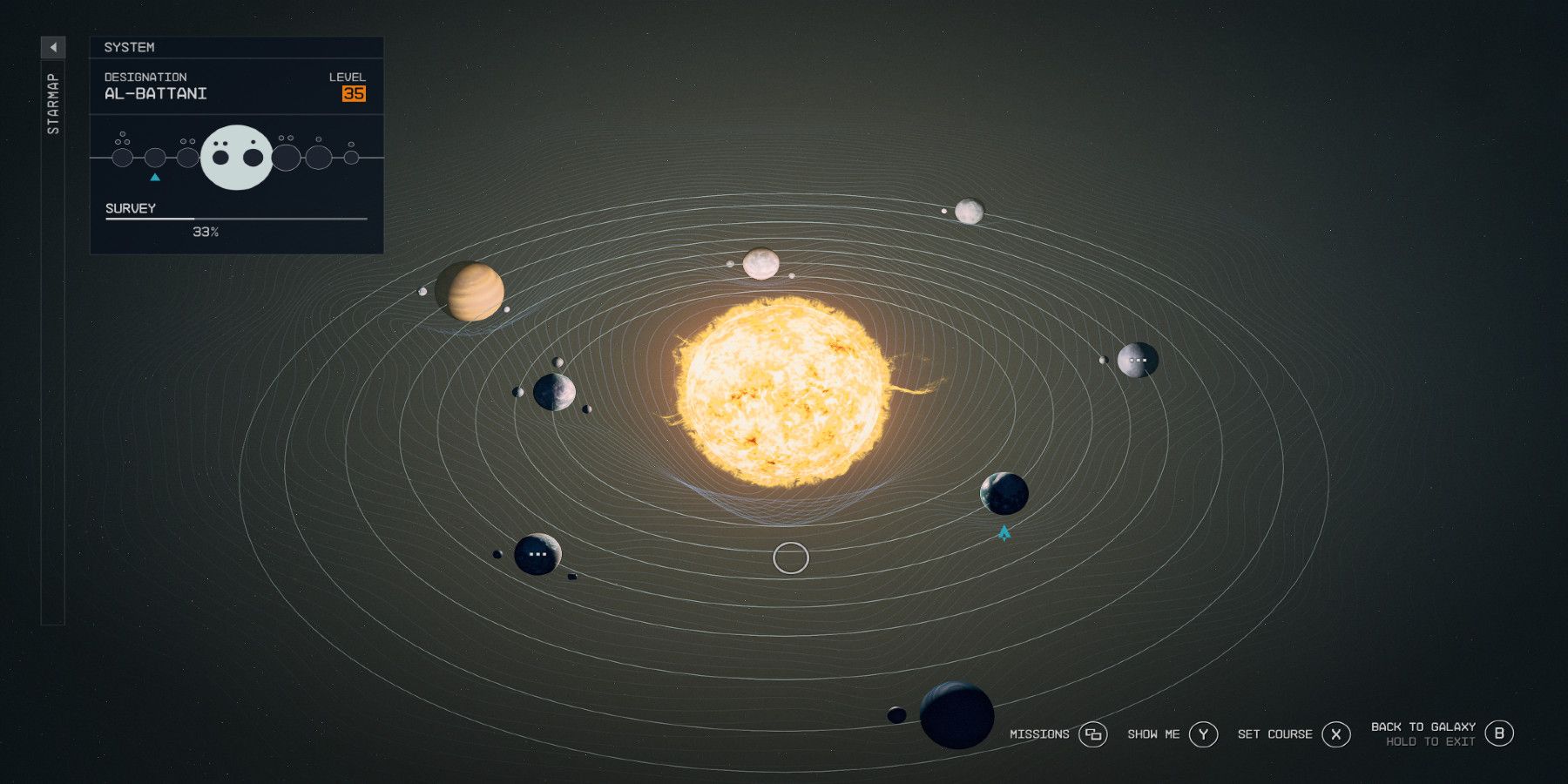Mars is the fourth planet from the Sun, while Ganymede is a moon of Jupiter, the largest in the solar system. Mars boasts a thin atmosphere, red surface, and numerous impact craters, making it a focus of scientific exploration for potential signs of past life.
On the other hand, Ganymede is an icy moon with its magnetic field and possible subsurface ocean, raising questions about its potential to host life. Both celestial bodies offer unique insights into our understanding of the solar system and the possibility of extraterrestrial life.
Let’s delve deeper into the characteristics and significance of Mars and Ganymede in the realm of planetary exploration and astrobiology.
Physical Characteristics
Size
Mars has a diameter of 6,779 km, while Ganymede measures 5,268 km in diameter.
Atmosphere
Mars has a thin atmosphere mainly composed of carbon dioxide. In contrast, Ganymede has no significant atmosphere.
Geology
Mars features diverse geological features like valleys and canyons. Ganymede, on the other hand, boasts a surface covered with impact craters and grooved terrains.

Credit: www.dailymail.co.uk
Exploration Missions
Mars Exploration Missions
Various missions have been sent to Mars to explore its surface and climate.
- NASA’s Mars Reconnaissance Orbiter, launched in 2005, provides detailed images of the Martian surface.
- The Mars Rover missions, such as Curiosity and Perseverance, have studied the planet’s geology and looked for signs of past life.
Ganymede Exploration Missions
Ganymede, as Jupiter’s largest moon, has also been a target for exploration missions.
- The Galileo spacecraft provided insights into Ganymede’s icy surface and subsurface ocean in the 1990s.
- The upcoming European Space Agency mission, JUICE, aims to study Ganymede’s magnetic field and potential habitability.
Potential For Life
When considering potential for life, both Mars and Ganymede have been of great interest to scientists and astronomers. These celestial bodies have been the subject of extensive research and exploration, with the aim of understanding whether they could support or have ever supported life. Below, we will examine the conditions on Mars and Ganymede that contribute to their potential for hosting life.
Conditions On Mars
Mars, often referred to as the “Red Planet,” has captivated the imagination of researchers for many years. Its similarities to Earth in terms of size, composition, and presence of water ice make it an enticing candidate for sustaining life. However, the harsh conditions on Mars pose significant challenges.
- The average temperature on Mars is extremely cold, with an average of about -80 degrees Fahrenheit (-62 degrees Celsius).
- The thin atmosphere on Mars lacks the necessary protection from harmful solar radiation.
- Additionally, Mars’ thin atmosphere does not provide sufficient pressure for liquid water to exist on its surface.
- However, recent discoveries of subsurface liquid brines suggest the potential for microbial life in Mars’ underground.
- Despite these challenges, the search for signs of life on Mars continues with missions such as NASA’s Perseverance rover and the upcoming European Space Agency (ESA) Rosalind Franklin rover.
Conditions On Ganymede
Ganymede, one of Jupiter’s largest moons, is also a subject of interest in the search for extraterrestrial life. Although it does not possess an atmosphere like Mars, it has several intriguing characteristics that make it a potential host for life.
- Ganymede is the only moon in our solar system known to have its magnetic field.
- It is believed that beneath the moon’s icy surface, an ocean of liquid water exists, a crucial component for the development of life.
- The presence of tidal heating caused by Ganymede’s interactions with the gravitational pull of Jupiter and other moons contributes to the potential for a liquid water ocean beneath the surface.
- Ganymede’s thick ice layer may act as a shield, protecting the potential ocean from harmful radiation.
- Further exploration of Ganymede, such as the proposed European Space Agency’s JUpiter ICy moons Explorer (JUICE) mission, is anticipated to provide valuable insights into its suitability for life.

Credit: oldworldgods.com
Magnetic Fields
Understanding the magnetic fields of celestial bodies is crucial in unraveling their mysteries. Let’s delve into the Mars Magnetic Field and the Ganymede Magnetic Field to see how they shape the unique characteristics of these two fascinating destinations.
Mars Magnetic Field
Mars, often referred to as the Red Planet, possesses a weak magnetic field compared to Earth’s. The magnetism on Mars is localized in rocks, and it lacks a global magnetic field as Earth does, influencing the planet’s atmosphere and potential habitability.
Ganymede Magnetic Field
Ganymede, one of Jupiter’s moons and the largest moon in the solar system, has a substantial magnetic field owing to its iron-rich core. Its magnetic field interacts with Jupiter’s immense magnetosphere, resulting in spectacular interactions as Ganymede orbits its parent planet.
Volcanic Activity
Volcanic activity is a fascinating phenomenon that occurs on various celestial bodies, including planets and moons. The volcanic landscapes of Mars and Ganymede provide insights into the geological processes that have shaped these worlds. Let’s delve into the volcanic activity on Mars and Ganymede to understand the unique features of their volcanic formations.
Volcanoes On Mars
Mars, often dubbed as the “Red Planet,” hosts a diverse array of volcanoes that have contributed to its intriguing surface features. Olympus Mons, the largest volcano in the solar system, dominates the Martian landscape, reaching heights of over 13 miles. The planet also showcases a variety of other shield volcanoes and volcanic plains, indicating a history of extensive volcanic activity. The presence of volcanic channels and lava flows further attests to the significant role of volcanic processes in shaping Mars.
Volcanoes On Ganymede
Ganymede, the largest moon in the solar system, boasts a unique geological composition that includes evidence of past volcanic activity. Although the surface of Ganymede primarily comprises ice and water, it also features distinct regions with grooved terrains that are believed to result from tectonic and volcanic processes. The presence of cryovolcanoes, which erupt icy materials instead of molten rock, sets Ganymede apart as a celestial body with a rich history of volcanic phenomena.
Possibility Of Human Colonization
Mars and Ganymede, two intriguing celestial bodies within our Solar System, have captured the attention of scientists and space enthusiasts worldwide. Their potential as future human colonies has ignited a plethora of discussions and debates. In this article, we will explore the challenges faced in the colonization of both Mars and Ganymede.
Challenges On Mars
Mars, often referred to as the “Red Planet,” has long been a subject of fascination for its potential to sustain life. Despite its similarities to Earth in terms of land masses and seasons, colonizing Mars presents a myriad of challenges.
- Harsh Environmental Conditions: Mars endures extreme temperatures, low atmospheric pressure, and a thin carbon dioxide-dominated atmosphere. These factors make it inhospitable for human life without the aid of suitable technology.
- Lack of Atmosphere: With Mars’ tenuous atmosphere offering minimal protection against harmful cosmic rays and solar radiation, any potential Martian colonists would need robust shielding to ensure their safety.
- Scarce Resources: Mars suffers from a scarcity of essential resources such as water, food, and oxygen. Overcoming this challenge would require advanced technologies for resource extraction and sustainable living.
- Transportation: The logistics of transporting humans, equipment, and supplies across vast distances in space pose significant challenges. Developing efficient methods of transportation would be crucial for successful colonization.
- Gravity: Mars’ gravity, only about 38% of Earth’s gravity, would present health risks to long-term human inhabitants. Maintaining bone density and muscle mass would require careful consideration and innovative countermeasures.
Challenges On Ganymede
Ganymede, the largest moon in our solar system, offers its own set of obstacles as a potential human colony.
- Distant Location: Situated in the outer reaches of the solar system, Ganymede’s distance from Earth poses significant challenges in terms of travel time and communication with Earth-based support systems.
- Extreme Cold: Ganymede experiences temperatures of around -290 degrees Fahrenheit (-178 degrees Celsius), making it essential for colonists to have adequate protection and insulation.
- Surface Radiation: Ganymede’s surface is exposed to high levels of radiation from Jupiter’s magnetic field. Shielding structures and protective suits would be necessary to mitigate health risks.
- Lack of Atmosphere: Similar to Mars, Ganymede has a minimal atmosphere. This lack of atmosphere not only exposes it to radiation but also results in a vacuum-like environment that requires advanced life support systems.
- Resource Accessibility: Extracting and utilizing resources such as water ice beneath Ganymede’s surface would be a considerable challenge, requiring innovative drilling technologies and resource management systems.
In conclusion, both Mars and Ganymede present formidable challenges for potential human colonization. Overcoming these obstacles would necessitate extensive research, technological advancements, and the application of innovative solutions. Nevertheless, the allure of exploring and establishing human presence on these celestial bodies continues to inspire scientists and dreamers alike.

Credit: gamerant.com
Frequently Asked Questions For Mars Vs Ganymede
What Are The Key Differences Between Mars And Ganymede?
Mars is the fourth planet from the sun, known for its red color and potential for supporting life. Ganymede is Jupiter’s largest moon, boasting a subsurface ocean and unique magnetic field. Understanding their disparities can reveal distinct insights into planetary evolution and potential habitability.
How Do The Atmospheres Of Mars And Ganymede Differ?
Mars features a thin atmosphere primarily composed of carbon dioxide, while Ganymede has a tenuous atmosphere mainly consisting of oxygen. This variance influences their surface conditions, potential for liquid water, and the overall geophysical processes occurring on each celestial body.
What Are The Notable Geological Features Of Mars And Ganymede?
Mars is renowned for its volcanoes, canyons, and impact craters, which help scientists unravel its geological history. In contrast, Ganymede showcases a blend of icy terrains, grooved surfaces, and impact craters, revealing clues about its formation and evolution within Jupiter’s complex environment.
Conclusion
While both Mars and Ganymede offer fascinating insights into our understanding of the universe, they possess distinct characteristics that set them apart. Mars captivates with its potential for supporting life and its proximity to Earth, whereas Ganymede enthralls with its unique status as the largest moon in our solar system.
By exploring these celestial bodies further, we can continue unraveling the mysteries of our universe and unlock new possibilities for scientific exploration.


